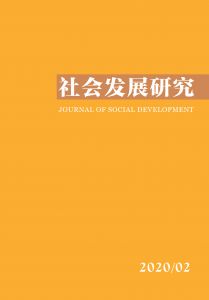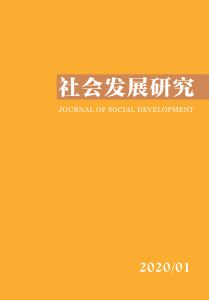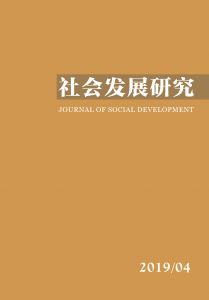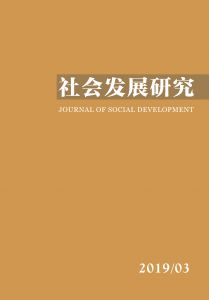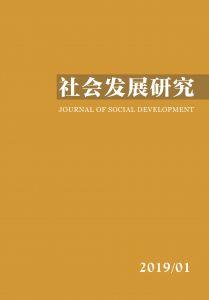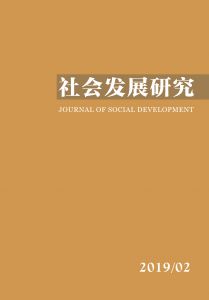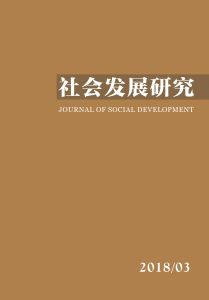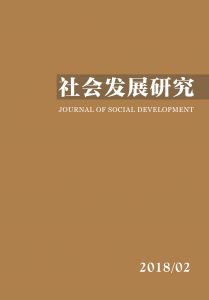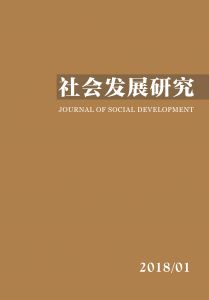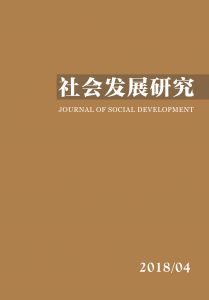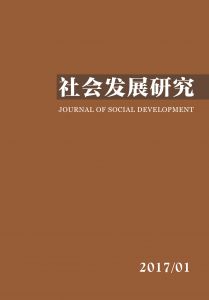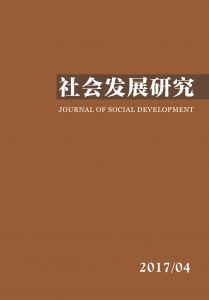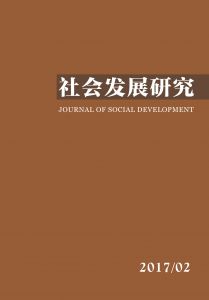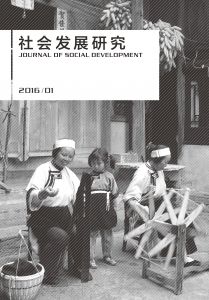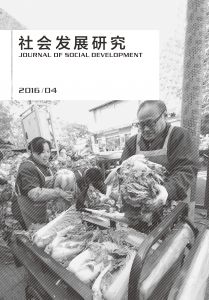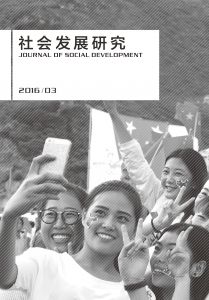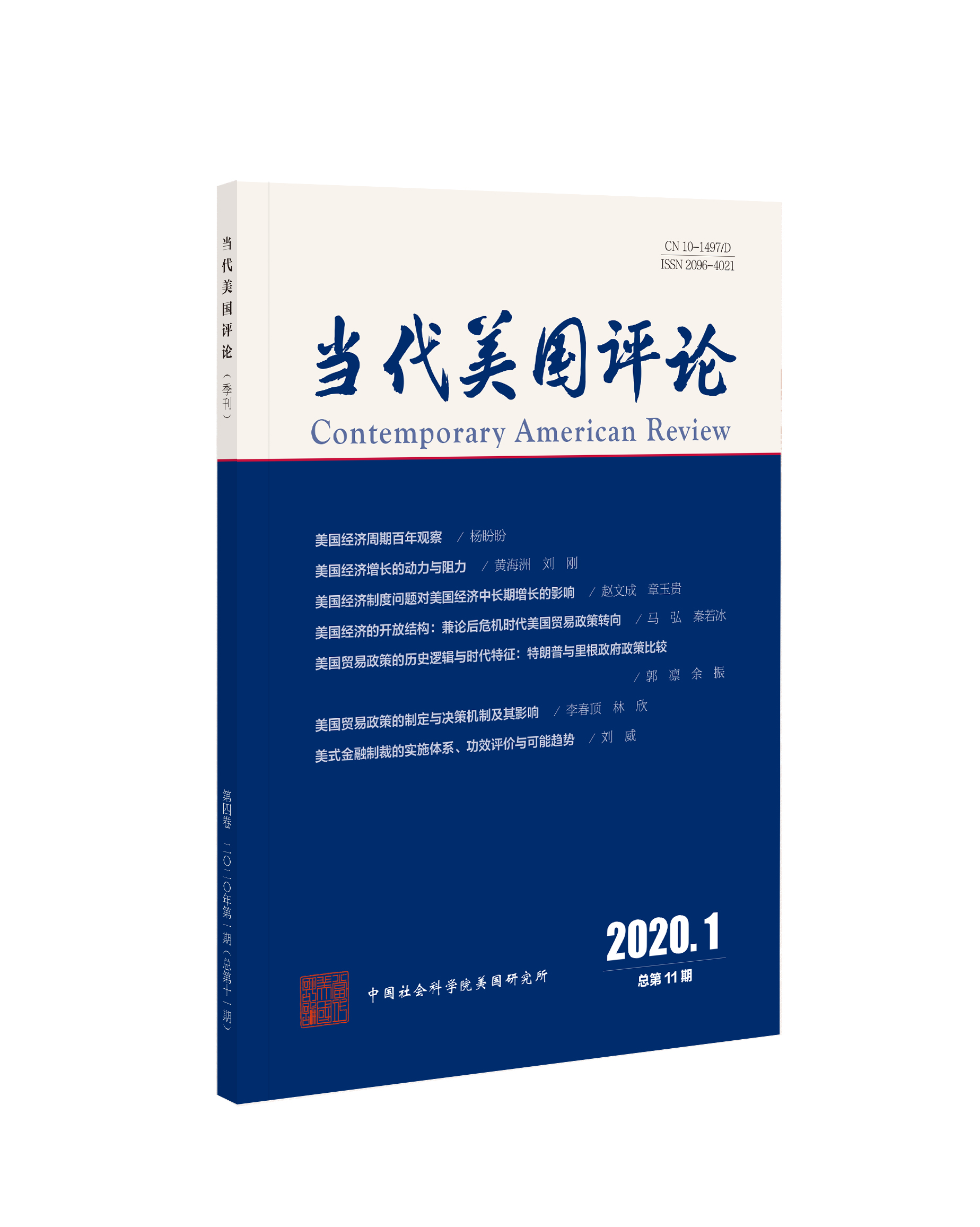最新期刊

目录
过往期刊
参考文献
-
编委会
-
·论文·
-
从乡村到城市:文化转型的视角
-
可持续的城市化:内涵、路径和政策
-
激励方向与组织选择
-
关于社会景气研究
-
博弈视角下小微企业合法性管理机制研究
-
流动人口困难家庭的求助网络与社会救助政策
-
社会排斥视角下无家可归者问题探究
-
社会服务政策属性及构建的探索分析
-
社会公平性产品更能增进政府信任吗?
-
话语促成的“共谋”
-
-
·研究述评·
-
生命历程理论及其视角下的移民研究:回顾与前瞻
-
-
·马克思主义学习与研究专栏·
-
异化问题
-
卢卡奇的物化思想及其现实意义
-
-
·书评·
-
经济因素与非经济因素的互构:进入一种文化解释的路径
-
-
英文目录及摘要
-
稿约
-
版权页
按年份浏览:
- 全部
- 2020
- 2019
- 2018
- 2017
- 2016
- 2015
- 2014
[1][1]《东莞市虎门镇志》编纂委员会,2010,《虎门镇志》,广州:广东人民出版社。
[2][2]费孝通,1997,《反思·对话·文化自觉》,《北京大学学报(哲学社会科学版)》第3期。
[3][3]费孝通,1999,《费孝通文集》(第五卷),北京:群言出版社。
[4][4]《虎门年鉴》编辑委员会,2014,《虎门年鉴·2014》,广州:广东人民出版社。
[5][5]李培林,2004,《村落的终结:羊城村的故事》,商务印书馆。
[6][6]李秀国,2015,《龙眼志:中国新型社区的岭南标本》,上海:上海古籍出版社。
[7][7]刘创楚、杨庆堃,1989,《中国社会——从不变到巨变》,香港:香港中文大学出版社。
[8][8]李翠玲,2011,《社神崇拜与社区重构——对中山市小榄镇永宁社区的个案考察》,《民俗研究》第1期。
[9][9]骆腾,2009,《冲突中的调适:城市二元社区新探——基于东莞市增埗村的实证研究》,《广西民族大学学报(哲学社会科学版)》第2期。
[10][10]芒福德,刘易斯,2005,《城市发展史:起源、演变和前景》,宋峻岭、倪文彦译,北京:中国建筑工业出版社。
[11][11]孟德拉斯,H.,2005,《农民的终结》,李培林译,北京:社会科学文献出版社。
[12][12]曲洪淇,2015,《2015年虎门镇政府工作报告》,11月25日(http://www.humen.gov.cn/html/20150302/42340.shtml)。
[13][13]徐红,2004,《从“乡民社会”走向“公民社会”——对中国社会发展模式的评析》,《上海大学学报(社会科学版)》第2期。
[14][14]薛凤旋、杨春,1997,《外资:发展中国家城市化的新动力——珠江三角洲个案研究》,《地理学报》第3期。
[15][15]赵旭东,2013,《从社会转型到文化转型——当代中国社会的特征及其转化》,《中山大学学报(社会科学版)》第3期。
[16][16]周大鸣、郭正林,1996,《论中国乡村都市化》,《社会科学战线》第5期。
[17][17]周大鸣,1995,《论珠江三角洲的乡村都市化》,《开放时代》第3期。
[18][18]周大鸣,1996,《中国乡村都市化研究》,中山大学出版社。
[19][19]周大鸣,1997a,“安海与虎门:闽粤集镇的市镇化比较”,《广州社会》第1期。
[20][20]周大鸣,1997b,《现代都市人类学》,广州:中山大学出版社。
[21][21]周大鸣,2000,《外来工与“二元社区”——珠江三角洲的考察》,《中山大学学报》第2期。
[22][22]周大鸣,2013a,《文化转型:冲突、共存于整合的意义世界》,安晓平、徐杰舜编,《社会转型与文化转型》,黑龙江人民出版社。
[23][23]周大鸣,2013b,《都市化中的文化转型》,《中山大学学报(社会科学版)》第3期。
[24][24]周大鸣,2015,《中国乡村都市化再研究》,中国社会科学文献出版社。
[25][25]Guldin,G. E. 1992,Urbanizing China . Westport:Greenwood Press.
[26][26]北京国际城市发展研究院,2012,《社会管理蓝皮书——中国社会管理创新报告》,北京:社会科学文献出版社。
[27][27]财经网,2015,《重庆市长黄奇帆讲述重庆的五个故事》,6月15日(http://economy.caijing.com.cn/20150615/3905460. shtml)。
[28][28]陈锋、周朝阳,2012,《农村留守老人问题探析》,《西南石油大学学报》第1期。
[29][29]段成荣、吕利丹、郭静、王宗萍,2013,《我国农村留守儿童生存和发展基本状况——基于第六次人口普查数据的分析》,《人口学刊》第3期。
[30][30]凤凰网,2011,《中国农村留守老人4000万高龄化空巢化加速发展》,3月2日(http://gongyi.ifeng.com/news/detail_2011_03/02/4924984_0.shtml)。
[31][31]高培勇,2015,《当前经济形势与五中全会精神》(内部学习讲话)。
[32][32]辜胜阻、易善策、李华,2011,《城镇化进程中农村留守儿童问题及对策》,《教育研究》第9期。
[33][33]光明网,2015,“国家统计局:2014年中国城镇化率达到54.77%”,1月20日(http://economy.gmw.cn/2015-01/20/content_14581533.htm)。
[34][34]国家人口和计划生育委员会,2014,《中国流动人口发展报告2014》,北京:中国人口出版社。
[35][35]国家统计局,2006,《农民工生活质量调查之三:对城市生活的评价和希望》,10月11日(http://www.stats.gov.cn/ztjc/ztfx/fxbg/200610/t20061011_16084.html)。
[36][36]国家统计局,2014,《2014年全国农民工监测调查报告》,4月29日(http://www.stats.gov.cn/tjsj/zxfb/201504/t20150429_797821.html)。
[37][37]郝华勇,2011,《基于主成分分析的我国省域城镇化质量差异研究》,《中共青岛市委党校青岛行政学院学报》第5期。
[38][38]何平,2013,《警惕农村城镇化走向极端》,4月2日(http://www.aisixiang.com/data/62682.html)。
[39][39]何平、倪苹,2013,《中国城镇化质量研究》,《统计研究》第6期。
[40][40]李培林,2015,《中产阶级成长和橄榄形社会》,CASS社会学研究所微信2015年12月9日发布。
[41][41]罗思义,2015,《要完成6.5%的年增长率不能误读“供给主义”》,12月21日(https://www.guancha.cn/LuoSiYi/2015_12_21_345344_2.shtml)。
[42][42]潘屹,2009,《家园建设:中国农村社区建设模式分析》,北京:中国社会出版社。
[43][43]朴炳铉,2012,《社会福利与文化——用文化解析社会福利的发展》,北京:商务印书馆。
[44][44]人民日报,2011,《听黄奇帆讲故事》,3月5日(http://paper.people.com.cn/rmrbhwb/html/2011-03/05/content_761352.htm)。
[45][45]王忠诚,2008,《城镇化质量测度指标体系研究——以我国直辖市为例》,《特区经济》第6期。
[46][46]新华网,2006,《中华人民共和国国民经济和社会发展第十一个五年规划纲要》,3月16日(http://news.xinhuanet.com/misc/2006-03/16/content_4309517.htm)。
[47][47]新华网,2011a,《统计称我国有4700万农村留守妇女精神负担重》,3月7日(http://www.qianhuaweb.com/content/2011-03/07/content_1369639.htm)。
[48][48]新华网,2011b,《中华人民共和国国民经济和社会发展第十二个五年规划纲要》,3月16日(http://www.ce.cn/macro/more/201103/16/t20110316_22304698.shtml)。
[49][49]新华网,2013,《中国农村留守儿童数量超6000万》,5月10日(http://news.xinhuanet.com/politics/2013-05/10/c_115720450.htm)。
[50][50]新华网,2014,《二元户口取消,农民工社保和福利壁垒待破》,9月19日(http://news.xinhuanet.com/city/2014-09/19/c_127004455.htm)。
[51][51]新华网,2015,《中国共产党第十八届中央委员会第五次全体会议公报》,10月29日(http://news.xinhuanet.com/fortune/2015-10/29/c_1116983078.htm)。
[52][52]郑永年,2015,《供给侧改革就是要有新的制度供给》,12月21日(http://www.ce.cn/macro/more/201512/21/t20151221_7684889.shtml)。
[53][53]中共中央、国务院,2014,《国家新型城镇化规划(2014—2020年)》,3月16日(http://news.xinhuanet.com/politics/2014-03/16/c-119791251.htm)。
[54][54]中国老年学学会,2011,《中国农村老龄问题百村调查报告选编》(内部资料)。
[55][55]中国青年报,2014,《农村老人自杀的平静与惨烈》,7月30日(http://zqb.cyol.com/html/2014-07/30/nw.D110000zgqnb_20140730_3-09.htm)。
[56][56]朱洪祥,2007,《山东省城镇化发展质量测度研究》,《城市发展研究》第6期。
[57][57]朱善利,2013,《论中国城乡一体化的逻辑》,《中国市场》第7期。
[58][58]Esping-Andersen,Gosta,1990,The Three Worlds of Welfare Capitalism ,Cambridge:Polity Press.
[59][59]European Commission 2003,Employment,Social Affairs and Inclusion,Indicator and Data,(Social Inclusion),(http://ec.europa.eu/social/main.jsp?catId=751&langId=en).
[60][60]Maesen,Laurent J.G.van Der & Alan Walker 2012,Social Quality:From Theory to Indicators ,Palgrave Macmillan。
[61][61]Marshall,T.H. 2000,“Citizenship and Social Class”,in Christopher Pierson & Francis G.Castles(eds.),The Welfare State Reader ,Cambridge:Polity Press.
[62][62]Wang,Zhikai 2015,a presentation in PhD course by Sino-Nordic Welfare Research Network,Nordic Centre of Fudan University.
[63][63]陈郁,2009,《编者的话》,陈郁编,《企业制度与市场组织——交易费用经济学文选》,上海:格致出版社。
[64][64]迪屈奇,迈克尔,2000,《交易成本经济学——关于公司的新的经济意义》,王铁生、葛立成译,北京:经济科学出版社。
[65][65]弗里德曼,米尔顿,2004,《资本主义与自由》,张瑞玉译,北京:商务印书馆。
[66][66]哈特,奥利弗,2006,《企业、合同与财务结构》,费方域译,上海:上海人民出版社。
[67][67]哈耶克,2012,《自由宪章》,杨玉生、冯兴元、陈茅等译,北京:中国社会科学出版社。
[68][68]练宏,2015,《注意力分配——基于跨学科视角的理论述评》,《社会学研究》第4期。
[69][69]诺思,道格拉斯,1992,《经济史上的结构与变革》,厉以平译,北京:商务印书馆。
[70][70]诺思,道格拉斯,2008,《制度、制度变迁与经济绩效》,杭行译,上海:格致出版社。
[71][71]理查德,斯科特、杰拉尔德·戴维斯,2011,《组织理论:理性、自然与开放系统的视角》,高俊山译,北京:中国人民大学出版社。
[72][72]彭特兰,阿莱克斯,2015,《智慧社会:大数据与社会物理学》,汪小帆等译,杭州:浙江人民出版社。
[73][73]森,阿玛蒂亚,2012,《以自由看待发展》,任赜、于真译,北京:中国人民大学出版社。
[74][74]王蔷、任庆涛,2004,《扁平化组织的组织模式架构》,《经济管理》第5期。
[75][75]韦伯,马克斯,2010,《经济与历史、支配的类型》,康乐等译,桂林:广西师范大学出版社。
[76][76]张维迎,1994,《西方企业理论的演进与最新发展》,《经济研究》第11期。
[77][77]张维迎,1995,《企业的企业家——契约理论》,上海:三联书店。
[78][78]张维迎,1996,《所有制、治理结构及委托—代理关系》,《经济研究》第9期。
[79][79]张维迎,2004,《博弈论与信息经济学》,上海:上海人民出版社。
[80][80]周其仁,1996,《市场里的企业:一个人力资本与非人力资本的特别合约》,《经济研究》第6期。
[81][81]周雪光,2003,《组织社会学十讲》,北京:社会科学文献出版社。
[82][82]Alchian,Armen & Harold Demsetz 1972,“Production,Information Costs,and Economic Organization.” The American Economic Review 62(5).
[83][83]Aiken,Michael & Jerald Hage 1971,“The Organic Organization and Innovation.” Sociology 5(1).
[84][84]Aiken,Michael,Samuel B.Bacharach & J.Lawrence French 1980,“Organizational Structure,Work Process,and Proposal Making in Administrative Bureaucracies.” The Academy of Management Journal 23(4).
[85][85]Barzel,Yoram 1977,“An Economic Analysis of Slavery.” Journal of Law and Economics 20(1).
[86][86]Burns,Tom & George M.Stalker 1961,The Management of Innovation . London:Tavistock Publications.
[87][87]Cheung,Steven 1983,“The Contractual Nature of The Firm.” Journal of Law and Economics 26(1).
[88][88]Coase,Ronald 1937,“The Nature of the Firm.” Economica 4(16).
[89][89]Conner,Kathleen R.1991,“A Historical Comparison of Resource-based Theory and Five Schools of Thought within Industrial Organization Economics:Do We Have A New Theory of the Firm?” Journal of Management 17(1).
[90][90]Conner,Kathleen R. & C.K.Prahalad 1996,“A Resource-based Theory of the Firm:Knowledge versus Opportunism.” Organization Science 7(5).
[91][91]Cyert,Richard & James March 1963,A Behavior Theory of the Firm . New Jersey:Prentice Hall.
[92][92]Daft Richard L.1978,“A Dual-Core Model of Organizational Innovation.” The Academy of Management Journal 21(2).
[93][93]Damanpour,Fariborz 1991,“Organizational Innovation:A Meta-Analysis of Effects of Determinants and Moderators.” The Academy of Management Journal 34(3).
[94][94]Damanpour,Fariborz1996,“Bureaucracy and Innovation Revisited:Effects of Contingency Factors,Industrial Sectors,and Innovation Characteristics.” The Journal of High Technology Management 7(2).
[95][95]Demsetz,Harold 1988,“The Theory of the Firm Revisited.” Journal of Law,Economics & Organization 4(1).
[96][96]Grant,Robert M.1996a,“Toward a Knowledge-based Theory of the Firm.” Strategic Management Journal 17(Winter Special Issue).
[97][97]Grant,Robert M.1996b,“Prospering in Dynamically-Competitive Environments:Organizational Capability as Knowledge Integration.” Organization Science 7(4).
[98][98]Grossman,Sanford & Hart Oliver 1986,“The Costs and Benefits of Ownership:A Theory of Vertical and Lateral Ownership.” Journal of Political Economy 94(4).
[99][99]Hage,Jerald & Aiken Michae 1967,“Program Change and Organizational Properties:a Comparative Analysis.” American Journal of Sociology 72(5) .
[100][100]Hannan,Michael & John Freeman 1977,“The Population Ecology of Organizations.” American Journal of Sociology 82(5).
[101][101]Hart,Oliver 1989,“An Economist’s Perspective on the Theory of the Firm.” Columbia Law Review 89(7).
[102][102]Hart,Oliver & John Moore 1990,“Property Rights and the Nature of the Firm.” Journal of Political Economy 98(6).
[103][103]Hayek,Friedrich 1945,“The Use Of Knowledge in Society.” American Economic Review 35(4).
[104][104]Holmstrom,Bengt & John Roberts 1998. “The Boundaries of the Firm Revisited.” Journal of Economic Perspectives 12(4).
[105][105]Jensen,Michael C. & William H.Meckling 1995,“Specific And General Knowledge,And Organizational Structure.” Journal of Applied Corporate Finance 8(2).
[106][106]Kimberly,John R. & Michael J.Evanisko 1981,“Organizational Innovation:The Influence of Individual,Organizational,and Contextual Factors on Hospital Adoption of Technological and Administrative Innovations.” The Academy of Management Journal 24(4).
[107][107]Kogut,Bruce & Udo Zander 1992,“Knowledge of the Firm,Combinative Capabilities and the Replication of Technology.” Organization Science 3(3).
[108][108]Kogut,Bruce & Udo Zander1996,“What Firms Do:Coordination,Identity,and Learning.” Organization Science 7(5).
[109][109]Madhok,Anoop 1996,“The Organization of Economic Activity:Transaction Costs,Firm Capabilities,and The Nature of Governance.” Organization Science 7(5).
[110][110]March,James G.1991,“Exploration and Exploitation in Organizational Learning.” Organization Science 2(1).
[111][111]Nahapiet,Janine & Sumantra Ghoshal 1998,“Social Capital,Intellectual Capital,and The Organizational Advantage.” The Academy of Management Review 23(2).
[112][112]Nickerson,Jack A. & Todd R.Zenger 2004,“A Knowledge-Based Theory of the Firm:The Problem-Solving Perspective.” Organization Science 15(6).
[113][113]Pierce,Jon L. & Andre L.Delbecq 1977,“Organizational Structure,Individual Attitudes,and Innovation.” Academy of Management Review . 2(1).
[114][114]Romanelli,Elaine 1991,“The Evolution of New Organizational Forms.” Annual Review of Sociology 17.
[115][115]Thompson,Victor A.1965,“Bureaucracy and Innovation.” Administrative Science Quarterly 10(1).
[116][116]Williamson,Oliver E.1975,Markets and Hierarchies:Analysis and Antitrust Implications . New York:Free Press.
[117][117]Williamson,Oliver E.1979,“Transaction-Cost Economics:The Governance of Contractual Relations.” Journal of Law and Economics 22(2).
[118][118]Williamson,Oliver E.1985,The Economic Institutions of Capitalism . New York:Free Press.
[119][119]迪顿,安格斯,2014,《逃离不平等:健康、财富及不平等的起源》,崔传刚译,北京:中信出版社。
[120][120]赫斯特罗姆,彼得,2010,《解析社会:分析社会学原理》,陈云松等译,南京:南京大学出版社。
[121][121]华生、罗小朋、张学军、边勇壮,2008,《中国奇迹的源头与动力何在》,《金融时报》12月8日。
[122][122]李汉林,2012,《发展过程中的相对剥夺感》,《社会发展研究》第1期。
[123][123]李汉林、魏钦恭,2013,《中国政企关系变迁的社会学分析》,《社会发展研究》第2期。
[124][124]渠敬东,2013,《社会发展的理念和评估》,李汉林主编,《中国社会发展报告2012》,北京:中国社会科学出版。
[125][125]王连伟,2015,《国外政府信任研究:理论述评及其启示》,《国外社会科学》第4期。
[126][126]王浦劬,1995,《政治学基础》,北京:北京大学出版社。
[127][127]张彦、魏钦恭、李汉林,2015,《发展过程中的社会景气与社会信心研究》,《中国社会科学》第4期。
[128][128]张永军,2007,《经济景气计量分析方法与应用研究》,北京:中国经济出版社。
[129][129]郑桂环,2011,《经济景气分析方法》,北京:科学出版社。
[130][130]朱力,2013,《公众信心聚散的社会心理学解读》,《人民论坛》3月5日。
[131][131]褚松燕,2013,《公众信心聚散机理与重塑对策》,《人民论坛》2月26日。
[132][132]Christensen,Tom & Per Lagreid 2005,“Trust in Government:The Relative Importance of Service Satisfaction,Political Factors,and Demography.” Public Performance & Management Review 28(4).
[133][133]Dalton,Russell J.2005,“The Social Transformation of Trust in Government.” International Review of Sociology 15(1).
[134][134]Gurr,Ted Robert 1971,Why Men Rebel . Princeton,NJ:Princeton University Press.
[135][135]Hirschman,A.O. & M.Rothschild 1973,“The Changing Tolerance for Income Inequality in The Course of Economic Development.” The Quarterly Journal of Economics 87(4).
[136][136]Kelly,R.1952,“Two Functions of Reference Groups.” in G.H.Swanson et.al.(eds.),Readings in Social Psychology . New York:Holt,Reinhart & Winston.
[137][137]Li,H.,Atteslander P.,Tanur J. & Wang Q.1998,Searching for Hidden Reality:Anomie and Social Change . Swiss Academy of Development,Research Report.
[138][138]Merton,R.K. & Rossi L.1968,“Contributions to the Theory of Reference Group Behavior.” in R.K.Merton(ed.),Social Theory and Social Structure . New York:The Free Press.
[139][139]Opp 1989,The Rationality of Political Protest . Boulder:Westview Press.
[140][140]Runciman 1972,Relative Deprivation and Social Justice . London:Routledge and Kegan Paul.
[141][141]杜姣,2016,《博弈论视角下的征地实践:基于鄂中L村的考察》,《西北农林科技大学学报(社会科学版)》第C2期。
[142][142]李玉刚、孟贝贝,2011,《规制和公众意愿双重约束下的企业合法性管理》,《华东经济管理》第6期。
[143][143]刘冰梦、向运华,2012,《走出中小企业社会保险滞后困境分析》,《企业经济》第9期。
[144][144]刘林平、陈小娟,2010,《制度合法性压力与劳动合同签订——对珠三角农民工劳动合同的定量研究》,《中山大学学报(社会科学版)》第1期。
[145][145]吕学鹏、李崇光,2001,《政府政策支持与中小企业发展关系研究》,《商业研究》第7期。
[146][146]帕森斯,1988/1965,《现代社会的结构与过程》,梁向阳译,北京:光明日报出版社。
[147][147]宋铁波、曾萍,2011,《多重制度压力与企业合法性倾向选择:一个理论模型》,《软科学》第4期。
[148][148]王丹丹、张英华,2012,《组织合法性的概念界定及研究脉络分析》,《求索》第10期。
[149][149]王水雄,2003,《结构博弈——互联网导致社会扁平化的剖析》,北京:华夏出版社。
[150][150]王水雄,2012,《博弈—结构功能主义》,北京:中国人民大学出版社。
[151][151]王兴、郑俊虎,2009,《中央与地方政府博弈背景下的企业政治战略——基于合法性视角的分析》,《当代经济》第2期。
[152][152]韦伯,马克斯,1997/1955,《经济与社会》,林荣远译,北京:商务印书馆。
[153][153]谢林,托马斯,2006/1960,《冲突的战略》,赵华等译,北京:华夏出版社。
[154][154]徐雨森、秦曦、李家波、乔冬娇,2015,《企业社会责任履行与政府监管的博弈分析》,《现代管理科学》第7期。
[155][155]杨玲丽,2010,《区域产业转移中的地方政府行为:效率机制与合法性机制的博弈》,《科技管理研究》第17期。
[156][156]张凤林、代英姿,2003,《西方内部劳动力市场理论评述》,《经济学动态》第7期。
[157][157]张维迎,1996,《博弈论与信息经济学》,上海:人民出版社。
[158][158]张永宏,2007,《组织社会学的新制度主义学派》,上海:人民出版社。
[159][159]周雪光,2003,《组织社会学十讲》,北京:社会科学文献出版社。
[160][160]Ahlstrom,D. & G. D. Bruton 2001,“Learning from Successful Local Private Firms in China:Establishing Legitimacy.” The Academy of Management Executive 15(4).
[161][161]DiMaggio,Paul & Walter Powell 1983,“The Iron Cage Revisited:Institutional Isomorphism and Collective Rationality in Organizational Fields.” American Social Review 42(2).
[162][162]Ginzel,L. E.,R. M. Kramer & R. I. Sutton 1993,“Organizational Impression Management as a Reciprocal Influence Process:The Neglected Role of the Organizational Audience.” In L. L. Cummings & B. M. Staw(eds.),Research in Organizational Behavior . Greenwich CT:JAI Press.
[163][163]Meyer,John W. 1977,“Institutionalized Organizations:Formal Structure as Myth and Ceremony.” American Journal of Sociology 85(5).
[164][164]Oliver,C. 1991,“Strategic Responses to Institutional Processes.” Academy of Management Review 16(1).
[165][165]Singh,J.V,D. J. Tucker & R.J. House 1986,“Organizational Legitimacy and the Liability of Newness.” Administrative Science Quarterly 31(2).
[166][166]Suchman,M. C. 1995,“Managing Legitimacy:Strategic and Institutional Approach.” Academy of Management Review 20(3).
[167][167]边燕杰、刘翠霞、林聚任,2004,《中国城市中的关系资本与饮食社交:理论模型与经验分析》,《开放时代》第2期。
[168][168]费孝通,1998,《乡土中国生育制度》,北京:北京大学出版社。
[169][169]桂勇、顾光辉、朱国宏,2002,《社会关系网络对搜寻工作的影响——以上海市下岗职工为例的实证研究》,《世界经济文汇》第3期。
[170][170]贺寨平,2001,《国外社会支持网研究综述》,《国外社会科学》第1期。
[171][171]洪小良、尹志刚,2006,《北京城市贫困家庭的社会支持网》,《北京社会科学》第2期。
[172][172]胡宏伟,2015,《中国城乡困难家庭社会政策支持系统建设数据分析报告2014》,北京:中国社会出版社。
[173][173]江治强、王伟进,2015,《城市低保制度管理运行现状与提升路径》,《调研世界》第5期。
[174][174]梁漱溟,1990,《梁漱溟全集(第三卷)》,济南:山东人民出版社。
[175][175]梁漱溟,2003,《中国文化要义》,上海:上海世纪出版集团。
[176][176]刘继同,2003,《英国社会救助制度的历史变迁与核心争论》,《国外社会科学》第3期。
[177][177]秦广强,2015,《流动人口的托底性民生保障问题研究》,王杰秀主编《托底性民生保障研究》,北京:中国社会出版社。
[178][178]唐钧、朱耀垠、任振兴,1999,《城市贫困家庭的社会保障和社会支持网络》,《社会学研究》第5期。
[179][179]王思斌,2001,《中国社会的求—助关系——制度与文化的视角》,《社会学研究》第4期。
[180][180]王思斌,2007,《转型中的中国社会救助制度之发展》,《文史哲》第1期。
[181][181]姚远,2004,《非正式支持:应对北京市老龄问题的重要方式》,《北京社会科学》第4期。
[182][182]章友德、周松青,2007,《资源动员与网络中的民间救助》,《社会》第3期。
[183][183]张文宏、阮丹青,1999,《城乡居民的社会支持网》,《社会学研究》第3期。
[184][184]Lin,Nan 1989,“Chinese Family Structure and Chinese Society”,Bulletin of the Institute of Ethnology 65.
[185][185]Yang,C. K.1965,Chinese Communist Society:the Family and the Village . Cambridge,MA:MIT Press.
[186][186]Yao,Yuan 2009,“Consanguinity Values and Choice of Informal Support Resources by the Elderly in China:an Analysis of Data from Relevant Studies of Beijing’s Elderly Population”,Social Sciences in China (1).
[187][187]阿列克谢耶娃,А.С.,2005,《作为一种社会歧视的无家可归现象》,蓝瑛波译,《国外社会科学(中文版)》第6期。
[188][188]阿辛斯基、哈巴叶娃,2004,《俄罗斯社会底层的无家可归者》,蓝瑛波译,《国外社会科学(中文版)》第5期。
[189][189]车莲鸿、杨世秀,1999,《国外无家可归问题的研究进展》,《医学与社会》第2期。
[190][190]陈家建,2015,《政策执行波动与基层治理问题》,《社会学研究》第3期。
[191][191]程福财,2009,《传统儿童照顾模式的失灵与流浪儿童问题的形成》,《社会》第5期。
[192][192]池子华,2001,《论近代流民“漂洋”现象》,《学海》第1期。
[193][193]崔岩,2012,《流动人口心理层面的社会融入和身份认同问题研究》,《社会学研究》第5期。
[194][194]丁文,1987,《家庭本质初探》,《社会学研究》第2期。
[195][195]杜鑫,2008,《中国农村青少年失学的影响因素分析》,《中国农村经济》第3期。
[196][196]范彦萍,2014,《上海反家庭暴力庇护救助中心:5年只接待了18人》,东方网,11月28日(http://sh.eastday.com/m/20141128/u1ai8466250p1.html)。
[197][197]费孝通,1998,《乡土中国 生育制度》,北京:北京大学出版社。
[198][198]郭伟和,2004,《社会政策的立法理念、程序和执行——以城市流浪乞讨人员救助政策的演变为例》,《首都师范大学学报(社会科学版)》第6期。
[199][199]韩克庆,2015,《我国城市流浪乞讨救助制度的新发展》,《社会科学研究》第4期。
[200][200]何芳,2013,《近十年美国无家可归儿童研究综述》,《比较教育研究》第8期。
[201][201]洪大用,2003,《进一步完善中国社会救助体系刻不容缓》,《社会福利》第9期。
[202][202]洪大用,2007,《社会救助的目标与我国现阶段社会救助的评估》,《甘肃社会科学》第4期。
[203][203]胡桂华,2006,《美国无家可归问题研究》,《西北人口》第4期。
[204][204]蒋悟真、洪明,2015,《社会救助制度变革的社会化、中国化与法治化》,《江汉论坛》第5期。
[205][205]景晓芬,2004,《社会排斥理论研究综述》,《甘肃理论学刊》第2期。
[206][206]克莱尔,2000,《消除贫困与社会整合:英国的立场》,肖特译,《国外社会科学(中文版)》第4期。
[207][207]梁茂春,2004,《美国的“无家可归”问题与政府的救助政策浅析》,《暨南大学(人文社科版)》第6期。
[208][208]李斌,2002,《社会排斥与中国城市住房改革制度》,《社会科学研究》第2期。
[209][209]李青,2001,《试论当代美国社会的无家可归者问题》,《杭州师范大学学报(哲学社会科学版)》第1期。
[210][210]李荣荣,2013,《从无家可归现象看体面社会的日常维系——基于参与观察的讨论》,《学术探索》第12期。
[211][211]李学举,2004,《建立和完善新型的社会救助制度——加强城市生活无着的流浪乞讨人员救助管理工作》,《求是》第7期。
[212][212]李迎生,2006,《弱势儿童的社会保护:社会政策的视角》,《西北师大学报(社会科学版)》第3期。
[213][213]李迎生、周妤,2007,《北京城市流浪乞讨人员生存状况探析》,《西北师范学报(社会科学版)》第6期。
[214][214]李迎生、李泉然,2015,《农村低保申请家庭经济状况核查制度运行现状与完善之策》,《社会科学研究》第3期。
[215][215]刘芳均,2010,《城市流浪乞讨群体分类管理模式的探讨——以上海浦东新区为例》,复旦大学硕士学位论文。
[216][216]刘继同,2002,《郑州市流浪儿童救助保护中心的个案研究》,《青年研究》第1期。
[217][217]刘继同,2003,《中国儿童福利政策模式与城市流浪儿童议题》,石家庄“救助流浪儿童国际学术研讨会”。
[218][218]刘同芗、郭健美、李笃武,2011,《农村低保边缘群体社会救助困境与政策建议——以山东省农村低保边缘群体为研究对象》,《中国农村小康科技》第1期。
[219][219]刘泽云,2007,《农村儿童为何失学?——基于多层模型的经验研究》,《北京师范大学学报(社会科学版)》第2期。
[220][220]卢国显、王太元、李春勇,2012,《城市流浪乞讨人员的生存状况、社会距离与管理创新思路——基于全国五个城市的调查》,《中国人民公安大学学报》第3期。
[221][221]陆士桢、魏兆鹏、胡伟,2005,《中国儿童政策概论》,北京:社会科学文献出版社。
[222][222]路学仁,2004,《救助管理站的困境与出路》,《社会科学》第2期。
[223][223]马凤芝,2014,《流浪青年的发展性社会工作介入策略——以社会企业介入模型为例》,《中国青年研究》第3期。
[224][224]彭超,2011,《对流浪乞讨人员的调查与分析》,《黑龙江社会科学》第4期。
[225][225]彭华民,2009,《西方社会福利理论前沿》,北京:中国社会出版社。
[226][226]森,阿马蒂亚,2005,《论社会排斥》,王燕燕译,《经济社会体制比较》第3期。
[227][227]斯米尔诺夫,阿,1957,《心理学》,朱智贤等译,北京:人民教育出版社。
[228][228]孙莹,2005,《儿童流浪行为分析及其干预策略》,《中国青年政治学院学学报》第6期。
[229][229]万光,1997,《美国社会病》,成都:四川人民出版社。
[230][230]王磊,2015,《农村中老年未婚男性的生活境况与养老意愿分析》,《中国农村观察》第1期。
[231][231]王慧敏、王玲,2010,《流浪儿童的社会支持及其与自我意识的关系》,《广州大学学报(社会科学版)》第9期。
[232][232]王思斌,2001,《中国社会的求—助关系——制度与文化的视角》,《社会学研究》第4期。
[233][233]王思斌,2003,《从管制到救助:流浪乞讨人员救助制度分析》,《中国党政干部论坛》第7期。
[234][234]王思斌,2005,《流浪儿童救助保护的能力建设》,《中国青年政治学院学报》第6期。
[235][235]王行健,2004,《社会救助制度的异化和变革》,《天府新论》第6期。
[236][236]吴海燕,2015,《城市流浪乞讨人员救助管理问题研究——以北京市F区为例》,首都经济贸易大学硕士学位论文。
[237][237]杨静秋,2014,《某市流浪乞讨人员生存及健康状况调查》,吉林大学硕士学位论文。
[238][238]应若平、周其林、颜欢、左光明,2005,《流浪乞讨群体状况调查》,《中国社会保障》第8期。
[239][239]曾群、魏雁滨,2004,《失业与社会排斥:一个分析框架》,《社会学研究》第3期。
[240][240]郑功成,2011,《中国社会保障改革与发展战略(总论卷)》,上海:人民出版社。
[241][241]中国青少年研究中心“流浪儿童问题研究”课题组,2008,《我国城市流浪儿童的基本特征分析》,《中国青年研究》第6期。
[242][242]中华人民共和国民政部、国家发展改革委,2007,《“十一五”流浪未成年人救助保护体系建设规划》(民发〔2007〕75号)。
[243][243]周林刚,2004,《论社会排斥》,《社会》第3期。
[244][244]周林刚、冯建华,2005,《社会支持理论:一个文献回顾》,《广西师范大学学报(哲学社会科学版)》第7期。
[245][245]周安平,2008,《流浪者的权利与国家权力》,《河北法学》第1期。
[246][246]Akins,Julie 1988,“Necessary Relief:The Stewart B. McKinney Homeless Assistance Act.” Nation Coalition for the Homeless,Washington,DC.
[247][247]Beck,W.,Maesen,L. & A. Walker(eds.)1995,The Social Quality of Europe . Bristol:The Policy Press.
[248][248]Ben-Amos,I. K. 2000,“Gifts and Favors:Informal Support in Early Modern England.” The Journal of Modern History 72(2).
[249][249]Burchardt,T.,J. Le Grand & D. Piachaud 1999,“Social Exclusion in Britain 1991-1995.” Social Policy & Administration 33(3).
[250][250]Castel,R. 2000,“The Roads to Disaffiliation:Insecure Work and Vulnerable Relationships.” International Journal of Urban and Regional Research 24(3).
[251][251]Duffy,K.1998,The Human Dignity and Social Exclusion Project Research Opportunity and Risk:Trends of Social Exclusion in Europe . Strasbourg:Council of Europe.
[252][252]Esping-Andersen,G. 1999,Social Foundations of Postindustrial Economies . Oxford:Oxford University Press.
[253][253]Gallie,Duncan 1999,“Unemployment and Social Exclusion in the European Union.” European Societies 1(2).
[254][254]Haber,M. & P. A. Toro 2004,“Homelessness among Families,Children and Adolescents:An Ecological-developmental Perspective.” Clinical Child and Family Psychology Review 7(3).
[255][255]Heikkinen,Minna 2000,“Social Networks of the Marginal Young:A Study of Young People’s Social Exclusion in Finland.” Journal of Youth Studies 3(4).
[256][256]Julkunen,Ilse 2002,“Social and Material Deprivation among Unemployed Youth in Northern Europe.” Social Policy and Administration 36(3).
[257][257]Nicholas,Deakin 1995,Public Welfare Services and Social Exclusion:The Development of Consumer Oriented Initiatives in the European Union . Shankill,Co. Dublin,Ireland:European Foundation for the Improvement of Living and Working Conditions.
[258][258]Nunez,Ralph 2000,“Homeless in America:A children’s Story.” Journal of Children & Poverty 6(1).
[259][259]Oyen,Else,Alberto Cimadamore & Michel Fultot 2002,Best Practices in Poverty Reduction:An Analytical Framework . London:Zed Books Ltd.
[260][260]Paugam,S. 1995,“The Spiral of Precariousness.” In G. Room(ed.),Beyond the Threshold:the Measurement and Analysis of Social Exclusion . Bristol:The Policy Press.
[261][261]Robbins,D.1994,Social Europe towards a Europe of Solidarity:Combating Social Exclusion . Commission of the European Communities.
[262][262]Sen,Amartya 1985,Commodities and Capabilities . Amsterdam:North Holland.
[263][263]Sen,Amartya1992,Inequality Reexamined . Oxford:Clarendon Press.
[264][264]Sen,Amartya2000,Social Exclusion:Concept,Application,and Scrutiny . Asian Development Bank.
[265][265]Silver,H.1999,“National Conceptions of the New Urban Poverty:Social Structural Change in Britain,France and the United States.” International Journal of Urban and Regional Research 17(3).
[266][266]Taylor,P.1999,“Democratizing Cities:Habitat’s Global Campaign on Urban Governance.” Habitat Debate 5(4).
[267][267]Thoits,P.1986,“Social Support as Coping Assistance.” Journal of Consulting and Clinical Psychology 54(4).
[268][268]Weiss,R.1981,“The Emotional Impact of Marital Separation.” In Peter Stein(ed)Single life:Unmarried Adults in Social Context . New York:St. Martin’s Press.
[269][269]毕克,古斯·范,2015,《社会服务部门的质量管理方法:范式转变》,李兵等译,《社科纵横》第10期。
[270][270]迪安,哈特利,2009,《社会政策学十讲》,岳经纶、温卓毅、庄文嘉译,上海:格致出版社。
[271][271]敬乂嘉,2011,《社会服务中的公共非营利合作关系研究》,《公共行政评论》第5期。
[272][272]科尔巴奇,H.K.,2005,《政策》,张毅、韩志明译,长春:吉林人民出版社。
[273][273]李兵,2011,《国外社会服务发展历程及其启示》,《中国民政》第3期。
[274][274]李兵,2014,《“整合的社会服务”:理论阐释和战略抉择》,《社科纵横》第4期。
[275][275]李兵、陈谊、胡文琦,2014,《社会政策框架下的社会服务:模型构建和政府职责》,《北京行政学院学报》第5期。
[276][276]林闽钢,2013,《我国社会服务管理体制和机制研究》,《华中师范大学学报(人文社会科学版)》第3期。
[277][277]林闽钢、周正,2014,《政府购买社会服务:何以可能与何以可为?》,《江苏社会科学》第3期。
[278][278]马克思,1975,《资本论》,中央编译局译,北京:人民出版社。
[279][279]芒迪,布莱恩,2011,《欧洲社会服务:特点与趋势》,李兵译,李兵、张恺悌、何珊珊编,《社会服务》,北京:知识产权出版社。
[280][280]民政部政策研究中心,2011,《社会服务与民政》,《中国民政》第5期。
[281][281]潘屹,2014,《国际社会服务理论与实践》,《国际社会科学杂志(中文版)》第1期。
[282][282]王思斌,2014,《社会服务的结构与社会工作的责任》,《东岳论丛》第1期。
[283][283]姚远,2000,《血亲价值论:对中国家庭养老机制的理论探讨》,《中国人口科学》第6期。
[284][284]岳经纶,2010,《个人社会服务与福利国家:对我国社会保障制度的启示》,《学海》第4期。
[285][285]岳经纶、郭英慧,2013,《社会服务购买中政府与NGO关系研究》,《东岳论丛》第7期。
[286][286]Adams,A. & S. M. Shardlow 2005,“The Construction of Social Work in England-a Critical Review,” in P. Erath,J. Keller & B. Littlechild(eds.),De- and Reconstruction in European Social Work . Stassfurt:ISIS.
[287][287]Colebatch,H. K. 2009,Policy . New York:McGraw-Hill.
[288][288]Delnoij,D.,Niek Klazinga & I. Kulu Glasgow 2002,“Integrated Care in an International Perspective”. International Journal of Integrated Care . 2(1).
[289][289]Dinitto,Diana M. & David H. Johnson 2012,Essentials of Social Welfare . New Jersey:Pearson Education,Inc.
[290][290]European Platform for Rehabilitation(EPR)2010. Common Quality Framework for Social Services of General Interest ,Brussels.
[291][291]Fultz,Elaine & Martin Tracy(eds.)2004,Good Practices in Social Services Delivery in South Eastern Europe . Budapest:International Labour Organization.
[292][292]Hawkes,Nigel 2009. Integrated Care. http://www.bmj.com/content/338/bmj.b1484,2013-5-22
[293][293]Hill,Michael 1997,The Policy Process in the Modern State . London:Prentice Hall/Harvester Wheatsheaf.
[294][294]Hill,Michael2000,Local Authority Social Services . Oxford:Blackwell Publishers.
[295][295]Hogwood,B. W. & L. A. Gunn 2007. Policy Analysis for the Real World . Oxford:Oxford University Press.
[296][296]Howlett,Michael,M. Ramesh & Anthony Perl 2009,Studying Public Policy . Oxford:Oxford University Press.
[297][297]Jagdish(ed.)2004,Social Welfare in the 21th Century . New Delhi:Akansha Publishing House.
[298][298]Jansson,Bruce S. 2008,Becoming an Effective Policy Advocate:From Policy Practice to Social Justice . Belmont:Brooks/Cole.
[299][299]Levin,P. 1997,Making Social Policy:The Mechanisms of Government and Politics,and How to Investigate Them . Buckingham,Open University Press.
[300][300]Lynch,Karen E. 2013,Social Services Block Grant:Background and Funding,Congressional Research Service,https://www.fas.org/sgp/crs/misc/94-953.pdf
[301][301]Moodie,Margaret 2004,“England:Social Services” In Elaine Fultz & Martin Tracy(eds.),Good Practices in Social Services Delivery in South Eastern Europe ,Budapest:International Labour Office.
[302][302]Munday,Brian 2007,Integrated Social Services in Europe . Strasbourg Cedex:Council of Europe Publishing.
[303][303]O’Connor,Mary Katherine & F. Ellen Netting 2011,Analyzing Social Policy . Hoboken:John Wiley & Sons,Inc.
[304][304]Settersten,Richard A. Jr. 2003,“A Rethinking Social Policy:Lessons of a Life-Course Perspective”,in Richard A. Settersten Jr.(ed.),Invitation to the Life Course:Toward New Understandings of Later Life ,New York:Baywood Publishing Company,Inc.
[305][305]Spicker,Paul 2014,Social Policy ,Bristol:Policy Press.
[306][306]Tenhoor,William J. 1982,“United States Health and Personal Social Services,” in Merl C. Hokenstad,Jr. & Roger A. Ritvo(eds.),Linking health Care and Social Service ,London:Sage Publication.
[307][307]The Social Protection Committee 2010,A Voluntary European Quality Framework For Social Services . Brussels:Employment,Social Affairs & Inclusion of European Commission.
[308][308]U.S. State of Connecticut Department of Social Services 2009. Programs and Services,www.ct.gov/dss,2016-3-19
[309][309]Wallis,Steven E. 2011. Avoiding Policy Failure ,Litchfield Park,AZ:Emergent Publications.
[310][310]鲍威斯,丹尼尔、谢宇,2009,《分类数据分析的统计方法》(第2版),任强、巫锡炜、穆峥译,北京:社会科学文献出版社。
[311][311]高学德、翟学伟,2013,《政府信任的城乡比较》,《社会学研究》第2期。
[312][312]胡荣、胡康、温莹莹,2011,《社会资本、政府绩效与城市居民对政府的信任》,《社会学研究》第1期。
[313][313]马得勇,2007,《政治信任及其起源——对亚洲8个国家和地区的比较研究》,《经济社会体制比较》第5期。
[314][314]孟天广、杨明,2012,《转型期中国县级政府的客观治理绩效与政治信任》,《经济社会体制比较》第4期。
[315][315]萨森,萨斯基亚,2011,《全球化及其不满》,李纯一译,上海:上海书店出版社。
[316][316]沙森,丝奇雅,2001,《全球城市:纽约、伦敦、东京》,周振华等译,上海:上海社会科学院出版社。
[317][317]谢宇,2010,《回归分析》,北京:社会科学文献出版社。
[318][318]熊美娟,2010,《政治信任研究的理论综述》,《公共行政评论》第6期。
[319][319]Catterberg,Gabriela & Alejandro Moreno 2006,“The Individual Bases of Political Trust:Trends in New and Established Democracies.” The International Journal of Public Opinion Research 18(1).
[320][320]Chen,Jie,Yang Zhong & Jan William Hillard 1997,“The Level and Sources of Popular Support for China’s Current Political Regime.”,Communist and Post-Communist Societies 30(1).
[321][321]Choi,Susanne Y.P. & Roman David 2012,“Lustration Systems and Trust:Evidence from Survey Experiments in the Czech Republic,Hungary,and Poland.” American Journal of Sociology 117(4).
[322][322]Citrin,J.1974,“Comment:The Political Relevance of Trust in Government”,American Political Science Review 68.
[323][323]Dimitrova-Grajzl,V. & Eszter Simon 2010,“Political Trust and Historical Legacy:The Effect of Varieties of Socialism”,East European Politics & Societies 22(1).
[324][324]Easton,D.1975,“A Re-Assessment of the Concept of Political Support”,British Journal of Political Science 5.
[325][325]Harvey,D.1989,“From Managerialism to Entrepreneurialism:The Transformation in Urban Governance in Late Capitalism.”,In Geografiska Annaler (Series B),Human Geography 71(1),The Roots of Geographical Change:1973 to the Present (1989). Wiley on Behalf of the Swedish Society for Anthropology and Grography.
[326][326]Kim,Myunghee & Mychal Voorhees 2011,“Government Effectiveness and Institutional Trust in Japan,South Korea,and China.” Asian Politics & Policy 3.
[327][327]Lane,Robert E.1969,Political Life . Glencoe:Free Press.
[328][328]Valerie Braithwaite & Levi,M.1998,Trust and Governance . New York:Russell Sage Foundation.
[329][329]Levi,M.1998,“State of Trust.” In Valerie Braithwaite & Margaret Levi(eds). Trust and Governance . New York:Russell Sage Foundation.
[330][330]Mason,David S. & James R.Kluegel 2000,“Introduction:Public Opinion and Political Change in the Post-communist States.” In David Mason & James Kluegel(eds). Marketing Democracy:Changing Opinion about Inequality and Politics in the East Central Europe . Oxford:Rowman and Littlefield Publishers.
[331][331]Mishler,W. & R.Rose 2001,“What are the origins of Political Trust?Testing Institutional and Cultural Theories in Post-communist Societies.” Comparative Political Studies 34.
[332][332]Nye,Joseph S.1997,“Introduction:The Decline of Confidence in Government.” In Jr.Joseph S.Nye,Phillip D. Zelikow & David C.King(eds.),Why People Don’t Trust Government? Cambridge:Harvard University Press.
[333][333]Putnam,Robert D.,Robert Leonardi & Raffaella Nanetti 1993,Making Democracy Work:Civic Traditions in Modern Italy . Princeton:Princeton University Press.
[334][334]Putnam,Robert D.2000,Bowling Alone:The Collapse and Revival of American Community . New York:Simon and Schuster.
[335][335]Stoneman,Paul 2008,This Thing Called Trust:Civic Society in Britain . London:Palgrave Macmillan.
[336][336]Torney-Purta,Judith,Carolyn Barber & W.K.Richardson 2004,“Trust in Government Related Institutions and Political Engagement among Adolescents in Six Countries.” Acta Politica 39.
[337][337]Uslaner,E.M.2002,The Moral Foundations of Trust . UK:Cambridge University Press.
[338][338]Wong,KY,HHM Hsiao & PS Wan 2009,“Comparing Political Trust in Hong Kong and Taiwan:Levels,Determinants,and Implications.” Japanese Journal of Political Science 10.
[339][339]Wong,Ka-ying,Po-san Wan & Hsin-Huang Hsiao 2011,“The Bases of Political Trust in Six Asian Societies:Institutional and Cultural Explanations Compared”,International Political Science Review 32(3).
[340][340]恩格斯,1956,《英国工人阶级状况》,中共中央马克思恩格斯列宁斯大林著作编译局译,北京:人民出版社。
[341][341]董海军,2010,《依势博弈:基层社会维权行为的新解释框架》,《社会》第5期。
[342][342]冯玉军,2007,《权力、权利和利益的博弈——我国当前城市房屋拆迁问题》,《中国法学》第4期。
[343][343]福柯,2010,《福柯读本》,汪民安编,北京:北京大学出版社。
[344][344]付伟博,2012,《我国城市居民拆迁问题研究综述》,《法制与社会》第5期。
[345][345]郭于华,2002,《“弱者的武器”与“隐藏的文本”——研究农民反抗的底层视角》,《读书》第7期。
[346][346]郭于华,2011,《“道义经济”还是“理性小农”:重读农民学经典论题》,《倾听底层——我们如何讲述苦难》,桂林:广西师范大学出版社。
[347][347]韩荡,2004,《“城中村”改造的理论框架及案例研究》,《规划师》第5期。
[348][348]李怀,2005,《城市拆迁的利益冲突:一个社会学解析》,《西北民族研究》第3期。
[349][349]李连江、欧博文,1997,《当代中国农民的依法抗争》,吴国光编,《九七效应》,香港:太平洋世纪研究所。
[350][350]李培林,2002,《巨变:村落的终结——都市里的村庄研究》,《中国社会科学》第1期。
[351][351]李志生,2002,《关于城中村改造的问题》,《城市建设》第5期。
[352][352]陆海燕,2011,《“城中村”改造问题研究》,《现代商贸工业》第2期。
[353][353]彭小兵、张保帅,2009,《城市拆迁中的维权博弈》,《城市问题》第1期。
[354][354]斯科特,2004,《国家的视角——那些试图改善人类状况的项目是如何失败的》,王晓毅译,北京:社会科学文献出版社。
[355][355]唐鸣、邓维立、张丽琴,2012,《“城中村”改造中的土地征收和房屋拆迁:操作层面的问题分析与对策建议——以H市为个案》,《当代世界社会主义问题》第1期。
[356][356]特纳,2000,《仪式过程:结构与反结构》,黄剑波、柳波赟译,北京:人民大学出版社。
[357][357]王春光,1995,《社会流动与社会充足:京城“浙江村”研究》,杭州:浙江人民出版社。
[358][358]王佳康,2015,《我国城中村拆迁问题的研究综述》,《赤峰学院学报(汉文哲学社会科学版)》第8期。
[359][359]吴毅,2007,《权力—利益的结构之网与农民群体性利益的表达困境——对一起石场纠纷案例的分析》,《社会学研究》第3期。
[360][360]雅各布,2006,《美国大城市的生与死》,金横山译,南京:译林出版社。
[361][361]应星,2001,《大河移民上访的故事》,北京:三联书店。
[362][362]应星,2007,《草根动员与农民群体利益的表达机制——四个个案的比较研究》,《社会学研究》第2期。
[363][363]于建嵘,2004,《当代中国的“以法抗争”——关于农民维权活动的一个解释框架》,《社会学研究》第2期。
[364][364]张小军,2004,《“反抗”还是“共谋”——“阿米巴效应”和人类变形虫》,《社会学家茶座》第8期。
[365][365]周大鸣,2001,《城乡结合部社区的研究:广州南景村50年的变迁》,《社会学研究》第4期。
[366][366]周毅刚,2007,《两种“城市病”比较——城中村与百年前的西方贫民窟》,《新建筑》第2期。
[367][367]Foucault,Michel 1980,Power/Knowledge:Selected Interviews and Other Writings,1972-1977 ,translated by Colin Gordon etc.. New York:Vintage Press.
[368][368]Le Corbusier 1964,The Radiant City:Elements of a Doctrine of Urbanism to be Used as the Basis of Our Machine-Age Civilization . New York:Orion Press.
[369][369]Lefebvre,Henri 1991,The Production of Space ,translated by Donald Nicholson Smith. Oxford:Blackwell Publishing.
[370][370]O’Brien,K.J. & Lianjiang Li 2006,Rightful Resistance in Rural China . Cambridge:Cambridge University Press.
[371][371]Rosnow,Ralph 1991,“Inside Rumor:A Personal Journey.” American Psychologist 46(5).
[372][372]Scott,James 1985,Weapon of the Weak:Everyday Forms of Peasant Resistance . New Haven:Yale University Press.
[373][373]Siu,Helen 1989,Agents and Victims in South China:Accomplices in Rural Revolution . New Haven:Yale University Press.
[374][374]埃尔德,G.H,2002,《大萧条的孩子们》,田禾、马春华译,南京:译林出版社。
[375][375]埃尔德,G.H.、葛小佳,1998,《变迁社会中的人生——生命历程及其中国的实例》,郭于华译,《中国社会科学季刊》(香港)第3期。
[376][376]包蕾萍,2005,《生命历程理论的时间观探析》,《社会学研究》第4期。
[377][377]包蕾萍,2012,《中国独生子女生命历程:家国视野下的一种制度化选择》,《社会科学》第5期。
[378][378]常京凤,1996a,《生命历程:“文革”对“老三届”学业和家庭的影响》,《中国青年研究》第1期。
[379][379]常京凤,1996b,《生命历程:“文革”对“老三届”婚姻的影响》,《中国青年研究》第3期。
[380][380]陈锋、梁伟,2015,《生命历程视角下农村家长陪读经历及其影响研究——基于甘肃华县的实地调查》,《南京农业大学学报(社会科学版)》第5期。
[381][381]陈占江,2008,《生命历程理论视野下的新生代农民工社会保护研究》,《学术交流》第11期。
[382][382]董潘、邓建伟,2000,《以生命历程视野看三峡库区移民》,《中国国情国力》第11期。
[383][383]何晓红,2011,《一个女性农民工的30年进城打工生活史——基于生命历程理论研究的视角》,《中国青年研究》第5期。
[384][384]李强,1999,《生命的历程——重大社会事件与中国人的生命轨迹》,杭州:浙江人民出版社。
[385][385]李强、邓建伟、晓筝,1999,《社会变迁与个人发展:生命历程研究的范式与方法》,《社会学研究》第6期。
[386][386]梁宏,2011,《生命历程视角下的“流动”与“留守”第二代农民工特征的对比分析》,《人口研究》第4期。
[387][387]刘精明,1999,《文革事件对升学、入学模式的影响》,《社会学研究》第6期。
[388][388]刘晓红,2010,《西方生命历程社会化研究:回溯与新进展》,《西藏大学学报》第2期。
[389][389]谭琳、苏珊·萧特、刘惠,2003,《“双重外来者”的生活——女性婚姻移民的生活经历分析》,《社会学研究》第2期。
[390][390]托马斯,W.I.、F.兹纳涅茨基,2000,《身处欧美的波兰农民》,张友云译,南京:译林出版社。
[391][391]杨汇泉、朱启臻,2011,《农村留守儿童家庭抚育策略的社会学思考——一项生命历程理论视角的个案考察》,《人口与发展》第2期。
[392][392]杨素雯,2010,《女性流动人口的生命历程事件分析》,中央民族大学硕士学位论文。
[393][393]袁松、余彪、阳云云,2009,《农民工返乡的生命历程——以湖北沟村为表述对象》,《青年研究》第4期。
[394][394]曾迪洋,2014,《生命历程理论视角下劳动力迁移对初婚年龄的影响》,《社会》第5期。
[395][395]Bentham,G.1988,“Migration and Morbidity:Implications for Geographical Studies of Disease.” Social Science and Medicine 26(1).
[396][396]Boyle,P.J.,T.J.Cooke,K.Halfacree & D.Smith 2003,“The Effect of Long-distance Family Migration and Motherhood on Partnered Women’s Labour Market Activity Rates in GB and the US.” Environment and Planning A 35(12).
[397][397]Brockerhoff,M.1990,“Rural-to-Urban Migration and Child Survival in Senegal.” Demography 27(4).
[398][398]Burton,L.M. & V.L.Bengtson 1985,“Black grandmothers:Issues of timing and continuity of roles.” In V.L.Bengtson & J.F.Roberson(eds.),Grandparenthood . Beverly Hills,CA:Sage.
[399][399]Caspi,Avshalom,Daryl J.Bem & Glen H.Elder Jr.1989,“Continuities and Consequences of Interactional Styles across the Life Course.” Journal of Personality 57(2).
[400][400]Chen,Kevin & Cheng Xiaonong 1999,“Comment on Zhou & Hou:A Negative Life Event With Positive Consequences?” American Sociological Review 64(1).
[401][401]Clausen,J.A.1995,“Gender,Contexts,and Turning Points in Adults Lives.” In P.Moen,G.H.Elder,Jr. & K.Luscher(eds.),Examining Lives in Context:Perspectives on the Ecology of Human Development . Washington,DC:APA.
[402][402]Courgeau,Daniel 1989,“Family Formation and Urbanization.” Population:An English Selection 44(1).
[403][403]Davis,Deborah 1992,“Skidding:Downward Mobility among Children of the Maoist Middle Class.” Modern China 18(4).
[404][404]Deurloo,M.C.,W.A.V.Clark & F.M.Dieleman 1994,“The Move to Housing Ownership in Temporal and Regional Contexts.” Environment and Planning A 26(11).
[405][405]Elder Jr.,Glen H.1987,“War Mobilization and the Life Course:A Cohort of World War ⅡVeterans.” Sociological Forum 2(3).
[406][406]Elder Jr.,Glen H. & A.M.O’Rand 1995,“Adult Lives in a Changing Society.” In Karen S.Cook,Gary Alan Fine & James S.House(eds.),Sociological Perspectives on Social Psychology . Boston:Allyn and Bacon.
[407][407]Elder,Glen H.,Jr.,M.K.Johnson & R.Crosnoe 2003,“The Emergence and Development of Life Course Theory.” Handbook of the Life Course . New York:Springer.
[408][408]Evans,Jeffrey 1987,“Introduction:Migration and Health.” International Migration Review 21(3).
[409][409]Feijten,P. & M.van Ham 2007,“Residential Mobility and Migration of the Divorced and Separated.” Demographic Research 17(21).
[410][410]Findley,S.E.1988,“The Directionality and Age Selectivity of the Health-Migration Relation:Evidence from Sequence of Disability and Mobility in the United States.” International Migration Review 22(3).
[411][411]Frisbie,W.P.,C.Youngtae & R.A Hummer 2001,“Immigration and the Health of Asian and Pacific Islander Adults in the United States.” American Journal of Epidemiology 153(4).
[412][412]Furstenberg,F.F.,J.Brooks-Gunn & S.P.Morgan 1987,Adolescent Mothers in Later Life . New York:Cambridge University Press.
[413][413]Furstenberg,F.F.,T.Cook,J.Eccles,G.H.Elder,Jr. & A.Sameroff 1999,Managing to Make It:Urban Families and Adolescent Success . Chicago:University of Chicago Press.
[414][414]Gieryn,T.F.2003,“A Space for Place in Sociology.” Annual Review of Sociology 26(1).
[415][415]Hervitz,H.M.1985,“Selectivity,Adaptation,or Disruption?A Comparison of Alternative Hypotheses on the Effects of Migration on Fertility:the Case of Brazil.” International Migration Review 19(2).
[416][416]Hofferth,Sandra L.1985,“Updating Children’s Life Course.” Journal of Marriage and the Family 47(1).
[417][417]Hunt C.W.1989,“Migrant Labor and Sexually Transmitted Disease:AIDS in Africa.” Journal of Health and Social Behavior 30(4).
[418][418]Jasso,G.,D.S.Massey,M.R.Rosenzweig & J.P.Smith 2004. “Immigrant Health:Selectivity and Acculturation.” In N.B.Anderson,R.A.Bulao & B.Cohen(eds.),Critical Perspectives on Racial and Ethnic Difference in Health in Late Life . Washington,DC:National Academies Press.
[419][419]Johansson,L.M.,J.Sundquist,S.E.Johansson,J.Qvist & B.Bergman 1997,“The Influence of Ethnicity and Social and Demographic Factor on Swedish Suicide Rates:A Four Year Follow-up Study.” Social Psychiatry and Psychiatric Epidemiology 32:165-170.
[420][420]Kulu,H.2005,“Migration and Fertility:Competing Hypotheses Re-examined.” European Journal of Population 21(1).
[421][421]Kulu,H. & A.Vikat 2007,“Fertility Differences by Housing Type:The Effect of Housing Conditions or of Selective Moves?” Demographic Research 17(3).
[422][422]Lee,B.S.1992,“The Influence of Rural-urban Migration on Migrant’s Fertility Behavior in Cameroon.” International Migration Review 26(4).
[423][423]Lu,Yao 2008,The Link Between Migration and Health:A Longitudinal Analysis of Indonesian Data . Dissertation,University of California.
[424][424]Mayer,K.U. & U.Schoepflin 1989,“The State and the Life Course.” Annual Review of Sociology 15.
[425][425]McDonald,J.T. & S.Kennedy 2004,“Insights into the‘Healthy Immigrant Effect’:Health Status and Health Service Use of Immigrants to Canada.” Social Science and Medicine 59.
[426][426]Meyer,John W.1986,“The Institutionalization of the Life Course and Its Effects on the Self.” In A.Sørensen,F.E.Weinert & L.R.Sherrod(eds.),Human Development and the Life Course:Multidisciplinary Perspectives . NJ:Eribaum.
[427][427]Michielin,F. & C.H.Mulder 2007,“Geographical Distances between Adult Children and Their Parents in the Netherlands.” Demographic Research 17(3).
[428][428]Moen,P.1991,“Transitions in Mid-Life:Women’s Work and Family Roles in the 1970s.” Journal of Marriage and Family 53(1).
[429][429]Moen,P. & K.R.Smith 1986,“Women at Work:Commitment and Behavior over the Life Course.” Sociological Forum 1(3).
[430][430]Moen,P.,D.Dempster-McClain & R.W.Williams,Jr.1992,“Successful Aging:A Life-course Perspective on Women’s Multiple Roles and Health.” American Journal of Socilology 97(6).
[431][431]Mortimer,Jeylan T. & Michael J.Shanahan 2004,Handbook of the Life Course . Springer:NewYork.
[432][432]Mulder,C.H. & M.Wagner 1993,“Migration and Marriage in the Life Course:A Method for Studying Synchronized Events.” European Journal of Population 9(1).
[433][433]Muszynska,M. & H.Kulu 2007,“Migration and Union Dissolution in A Changing Socio-economic Context:The Case of Russia.” Demographic Research 17(27).
[434][434]Neugarten,B.L. & G.O.Hagestad 1976,“Age and the Life Course.” In R.Binstock & E Shanas(eds.),Handbook of Aging and the Social Sciences . New York:Van Nostrand Reinhold.
[435][435]Nedoluzhko,L. & G.Andersson 2007,“Migration and First-time Parenthood:Evidence from Kyrgyzstan.” Demographic Research 17(25).
[436][436]Newbold,K.B & Danforth,J.2003,“Health Status and Canada’s Immigrant Population.” Social Science and Medicine 57(10).
[437][437]Riley,M.W.,M.E.Johnson & A.Foner 1972,“Aging and Society.”(A Book Review of Aging and Society [Vol .3]:A Sociology of Age Stratification ),Science 178.
[438][438]Rundquist,F.M. & L.A.Brown 1989,“Migrant Fertility Differentials in Ecuador.” Geografiska Annaler B71(2).
[439][439]Ryder,Norman 1965,“The Cohort as a Concept in the Study of Social Change.” American Sociological Review 30(6).
[440][440]Sampson,R.J.,& J.H.Laub 1996,“Socioeconomic Achievement in the Life Course of Disadvantaged Men:Miitary Service as A Turning Point,Circa 1940-1950.” American Sociological Review 61(3).
[441][441]Sandefur,G.D. & W.J.Scott 1981,“A Dynamic Analysis of Migration:An Assessment of the Effects of Age,Family and Career Variables.” Demography 18(3).
[442][442]Smith,A.Wade & June E.G.Meitz 1983,“Life-Course Effects on Marital Disruption.” Social Indicator Research 13(4).
[443][443]Smith,K.R. & P.Moen 1988,“Passage Through Midlife:Women’s Changing Family Roles and Economic Well-being.” Sociological Quarterly 29(4).
[444][444]Sorensen,Aage B.1990,“Employment Sector and Unemployment Process.” In Karl Ulrich Mayer & Nancy Brandon Tuma(eds.),Event History Analysis in Life Course Research . Madison:The University of Wisconsin Press.
[445][445]Ssengonzi,R.,G.F.De Jong & C.Shannon Stokes 2002,“The Effect of Female Migration on Infant and Child Survival in Uganda.” Population Research and Policy Review 21(5).
[446][446]Sungurova,Y.,S.E.Johansson & J.Sundquist 2006,“East-west Health Divide and East-west Migration:Self-reported Health of Immigrants from Eastern Europe and the Former Soviet Union in Sweden.” Scandinavian Journal of Public Health 34(2).
[447][447]Wellman,B.,R.Y.Wong,D.Tindall & N.Nazer 1997,“A Decade of Network Change:Turnover,Persistence,and Stability in Personal Communities.” Social Networks 19(1).
[448][448]Whyte,Martin King & William Parish 1984,Urban Life in Contemporary China . Chicago.IL:The University of Chicago Press.
[449][449]Zhou,Xueguang & Hou Liren Hou L 1999,“Children of the Cultural Revolution:The State and the Life Course in the People’s Republic of China.” American Sociological Review (1).
[450][450]Zhou,Xueguang,Nancy Brandon Tuma & Phyllis Moen 1996,“Stratification Dynamics under State Socialism:The Case of Urban China,1949-1993.” Social Forces 74(3).
[451][451]马克思,1956,《马克思恩格斯全集(第一卷)》,北京:人民出版社。
[452][452]马克思,1957,《马克思恩格斯全集(第二卷)》,北京:人民出版社。
[453][453]马克思,1960,《马克思恩格斯全集(第三卷)》,北京:人民出版社。
[454][454]马克思,1972,《马克思恩格斯全集(第二十三卷)》,北京:人民出版社。
[455][455]马克思,1979,《马克思恩格斯全集(第四十二卷)》,北京:人民出版社。
[456][456]马克思,1982,《马克思恩格斯全集(第四十卷)》,北京:人民出版社。
[457][457]Marx,Karl 1988,Economic and Philosophic Manuscripts of 1844 . New York:Prometheus Books.
[458][458]初见基,2001,《物象化》,河北:河北教育出版社。
[459][459]李辉,2012,《幻想的饕餮盛宴——西方马克思主义文化消费理论研究》,北京:中国社会科学出版社。
[460][460]卢卡奇,1986,《卢卡奇自传》,李渚青、莫立知译,北京:社会科学文献出版社。
[461][461]卢卡奇,1992,《历史与阶级意识》,杜章智译,北京:商务印书馆。
[462][462]卢卡奇,1993,《关于社会存在的本体论》,本泽勒编,白锡等译,重庆:重庆出版社。
[463][463]马克思,1975,《资本论》,中共中央马克思恩格斯列宁斯大林著作编译局编译,北京:人民出版社。
[464][464]马克思,1983,《马克思恩格斯列宁斯大林论人性异化人道主义》,中国社会科学院哲学所历史唯物主义研究室、中国历史唯物主义研究会编译,北京:清华大学出版社。
[465][465]马克思,1985,《1844年经济学哲学手稿》,中共中央马克思恩格斯列宁斯大林著作编译局编译,北京:人民出版社。
[466][466]潘于旭,2009,《从“物化”到“异质性”——西方马克思主义哲学逻辑转向的历史分析》,浙江:浙江大学出版社。
[467][467]张西平,1999,《卢卡奇》,长沙:湖南长沙出版社。
[468][468]道宾,弗兰克,2013,《新经济社会学》,左晗、程秀英、沈原译,上海:上海人民出版社。
[469][469]纪廉,莫洛、南德尔·科林斯、保拉·英格兰、马歇尔·迈耶编,2006,《新经济社会学——一门新兴学科的发展》,姚伟译,北京:社会科学文献出版社。
[470][470]萨林斯,马歇尔,2002,《文化与实践理性》,赵丙祥译,张宏明校,上海:上海人民出版社。
[471][471]萨林斯,马歇尔,2009,《石器时代的经济学》,张经纬、郑少雄、张帆译,北京:三联书店。
[472][472]斯梅尔瑟、斯威德伯格主编,2009,《经济社会学手册》,罗教讲、张永宏等译,北京:华夏出版社。
[473][473]涂尔干,爱弥儿,2015,《宗教生活的基本形式》,渠东、汲喆译,北京:商务印书馆。
[474][474]韦伯,马克斯,1997,《经济与社会》,林荣远译,北京:商务印书馆。
[475][475]韦伯,马克斯,1999,《社会科学方法论》,韩水法、莫茜译,北京:中央编译出版社。
[476][476]西美尔,2007,《货币哲学》,陈戎女、耿开君、文聘元译,北京:华夏出版社。
[477][477]泽利泽,维维安娜,2008,《给无价的孩子定价——变迁中的儿童社会价值》,王水雄、宋静、林虹译,王水雄校,上海:上海人民出版社。
[478][478]泽利泽,薇薇安娜,2009,《亲密关系的购买》,姚伟、刘永强译,上海:上海人民出版社。
[479][479]Altmann,S. P. 1903,“Simmel’s Philosophy of Money.” American Journal of Sociology 9:46-68.
[480][480]Crump,Thomas 1981,The Phenomenon of Money . London:Routledge & Kegan Paul.
[481][481]Douglas,Mary 1967,“Primitive Rationing.” In Raymond Firth(ed.),Themes in Economic Anthropology . London:Tavistock.
[482][482]Einzig,Paul 1966,Primitive Money . Oxford:Pergamon.
[483][483]Geertz,Clifford 1973,“Deep Play:Notes on the Balinese Cockfight.” In Clifford Geertz(ed.),The Interpretation of Cultures . New York:Basic Books.
[484][484]Simmel,Georg 1978,The Philosophy of Money . Translated by Tom Bottomore and David Frisby. London,Henley and Boston:Routledge & Kegan Paul.
[485][485]Weber,Max 1946,“The Social Psychology of the World Religions.” In H.H. Gerth and C. Wright Mills(eds.),From Max Weber:Essays in Sociology . New York:Oxford University Press.
[486][486]Zelizer,Viviana 1979,Moral & Market:The Development of Life Insurance in the United States . New Brunswick and London:Transaction Publishers.
[487][487]Zelizer,Viviana 1987,Pricing the Priceless Child:The Changing Social Value of Children . New York:Basic Books.
[488][488]Zelizer,Viviana 1988,“Beyond the Polemics on the Market:Establishing a Theoretical and Empirical Agenda.” Sociological Forum 3(Fall):614-34.
[489][489]Zelizer,Viviana 1989,“The Social Meaning of Money:‘Special Monies’.” American Journal of Sociology 95:342-77.
[490][490]Zelizer,Viviana 1993,The Social Meaning of Money . New York:Basic Books.
[491][491]Zelizer,Viviana 2007,“Past and Futures of Economic Sociology.” American Behavioral Scientist 50(April):1056-1069.
[492][492]Zelizer,Viviana 2011,Economic Lives:How Culture Shapes the Economy . Princeton & Oxford:Princeton University Press.
[展开]
相关推荐
手机可扫码阅读


